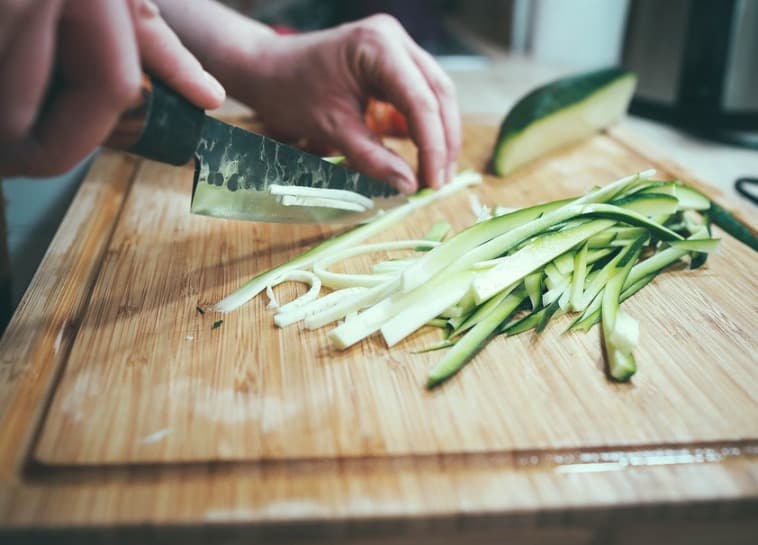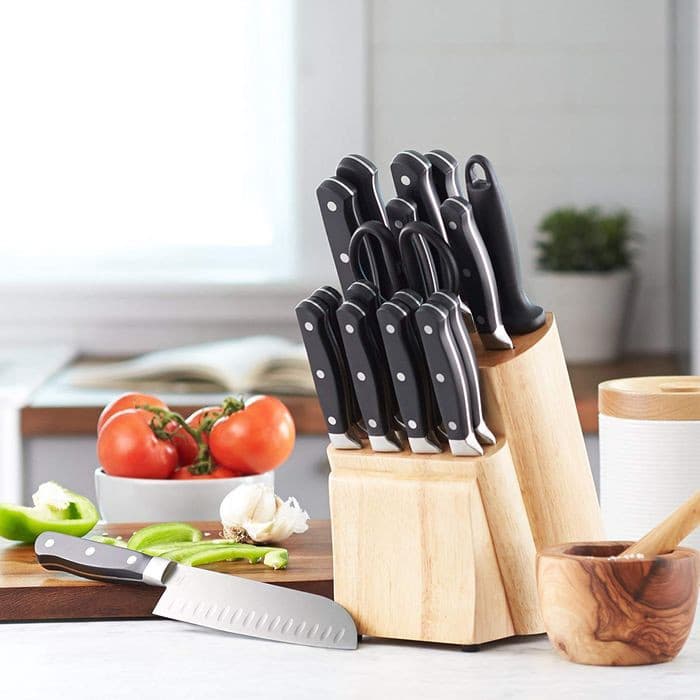With time and use, all knives dull. For our guarantee, they are all recoverable. We even know people who haven’t sharpened their knife in 10 years! A quick fix with a manual sharpener gets you out of trouble. To deepen and restore the angle of the edge of the blade, the best are the stones to the water to sharpen knives.
Knives that do not cut have a solution!
There is nothing more frustrating than using knives that don’t cut in the kitchen: you lose time, you lose precision and most importantly, they are dangerous as they can slip and cut you! As you know, the less sharp the knife is, the greater the force you must exert to cut.
In this article we will give you alternatives so that you can carry out a correct periodic sharpening maintenance with professional elements: sharpening stones or professional manual sharpeners that you can use at home.
But let’s start with the most basic question: what factors cause wear on a knife’s edge?
Why do knives get dull?
Kitchen knives become dull or lose their cutting power because wear (due to daily use) causes the initial angle of the edge to be lost. By increasing the contact surface of the knife edge with the food to be cut, friction increases and therefore the force that must be applied for the steel to penetrate the food. It seems like a simple matter, but by knowing the causes, we can act to improve the sharpening life of our kitchen knives.
The starting angle of the cutting edge of a western kitchen knife is usually between 20-25 degrees. With the loss of this angle, the knife will begin to lose cutting power.
It is absolutely normal for a kitchen knife to lose its edge over time with daily use in the home kitchen. On the other hand, we must value the sharpness of high-quality knives: the wear will always be less than a cheap or generic brand knife.
In addition to the wear caused by use, there are other factors that can damage the cutting power of kitchen knives, such as:
Dishwashers
It is always convenient, as recommended by the manufacturers, to wash the knives by hand since the dishwasher detergent or polish can be aggressive with the steel blade.
Other reasons will be the movement of the knives in the washing process can cause collisions with other knives or hard surfaces that can dent the blade.
Cutting boards or unsuitable cutting surfaces
You should always cut on boards whose surface is soft and tends to cushion the impact of the cut. You should never cut on hard surfaces such as steel or marble as you can resent the sharpness of the knives.
Storing knives
Store good kitchen knives in places where the movement of the drawer when opening or closing does not generate movements that can cause the knife to collide with others or with hard surfaces. If you are going to transport the knives, you should invest in a knife case.
Don’t drag cut food with the sharp side of the knife
If you want to drag the cut food on the cutting board to another place just turn the knife and do it with the back side. If you do it with the blade you will be damaging the edge.
Kitchen knives are for cutting!
Do not use kitchen knives for tasks for which they have not been intended, such as opening cans, as a screwdriver, etc. It would be an excellent idea to have a block to store them: they will always be organized and visible and most importantly, you will avoid clashes between knives.
Techniques for cut with sharp knives
You have already seen that the loss of the knife edge can have to do with the edge angle or with the blade surface being nicked or damaged. Quickly forget about knives that don’t cut because here we are going to give you solutions that you can use at home yourself.
To restore the sharpening angle at home we can apply one of these two techniques that we propose:
The easiest method: Manual sharpeners
With this method you can sharpen your kitchen knife in less than 5 minutes and enjoy the cutting power it had when you bought it.
You will only have to pass the blade of the knife through the opening of the sharpener a few times in the direction from the outside to the inside: first through the wear area (coarse) and finally through the polishing area (fine).
Professional stone sharpening
Whetstones can give you even better and more professional sharpness than manual sharpeners. The technique consists of passing the blade through the stone, first in one with a low grit (for example 300/400) to wear the blade and match the line of the edge. Then, in a second pass with a higher grit (for example 1000) it will give it a final polish. Repeat the pass on the other side of the knife.
Depending on the knife, you should keep the sharpening angle constant throughout the stroke: 20/25 degrees for a western knife or 15 degrees for oriental knives (with a sharp edge on both sides). Always consult the manufacturer’s manual to know the proper angle for your knife.
Tips for daily knife maintenance
You can use a sharpening steel to set the edge of your knives, to “match” the edge… and thus cut better.
Wash your knives by hand (we have already explained the disadvantages of the dishwasher) right after you have used them (some foods can corrode the steel if you expose it for a long time) and dry them before storing them.
We recommend you store the knives in a magnetic block. This way you will avoid clashes between the knife blades that could damage them.
Buy good kitchen knives: They are an investment that you can make profitable over the years. Of course, the good brands are concerned with designing knives that maintain their sharpness for longer, use better quality steel and are perfectly assembled to prevent the proliferation of bacteria.


